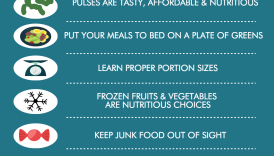Incorporating Movement into Your Daily Routine for Optimal Health

Benefits of Incorporating Movement
Improves Physical Health
Incorporating movement into daily routines offers a plethora of benefits for physical health. Regular physical activity helps to:
- Incorporating Movement into Your Daily Routine for Optimal Health
- Benefits of Incorporating Movement
- Improves Physical Health
- Boosts Mental Well-being
- Easy Ways to Add Movement to Your Day
- Taking Short Walk Breaks
- Desk Exercises
- Incorporating Movement at Home
- Creating a Home Workout Routine
- Engaging in Household Chores
- Making Movement Fun and Enjoyable
- Trying Different Physical Activities
- Exercising with Friends and Family
- Setting Realistic Movement Goals
- Tracking Daily Steps
- Scheduling Regular Exercise Sessions
- Enhance cardiovascular fitness: Engaging in activities such as brisk walking, swimming, or cycling improves heart health, reducing the risk of heart disease.
- Strengthen muscles and bones: Resistance exercises not only build muscle mass but also increase bone density, which is crucial as we age.
- Aid in weight management: Consistent movement burns calories and can contribute to maintaining or achieving a healthy weight.
- Reduce chronic disease risk: Regular physical activity can lower the risk of developing conditions like diabetes, high blood pressure, and some cancers.
Consider Sarah, who decided to incorporate movement into her daily routine by taking the stairs instead of the elevator. Over time, she noticed not only improved stamina but also a remarkable increase in her overall energy levels. She felt lighter, both physically and mentally, demonstrating just how simple changes can lead to significant improvements in health.
Boosts Mental Well-being
Beyond physical benefits, movement has a profound impact on mental well-being. Engaging in regular exercise is known to:
- Decrease symptoms of anxiety and depression: Physical activity releases endorphins, also known as “feel-good” hormones, which can lift mood and alleviate stress.
- Enhance cognitive function: Regular movement boosts brain health, which can improve memory and concentration.
- Promote better sleep: Those who incorporate movement often experience deeper, more restorative sleep, further enhancing overall mental health.
For instance, after incorporating a morning jog into her routine, Lisa found herself feeling more focused throughout her workday and less prone to mood swings. This change not only made her days more productive but also transformed her approach to challenges, equipping her with a positive mindset. In summary, the benefits of incorporating movement traverse both physical and mental health realms, creating a holistic improvement in overall well-being. The ripple effect of these changes can significantly enhance one’s quality of life, making it all the more essential to find ways to move regularly.
Easy Ways to Add Movement to Your Day
After recognizing the numerous benefits of incorporating movement into daily life, the next step is to find easy and practical ways to integrate physical activity throughout the day. Here are two simple yet effective approaches.
Taking Short Walk Breaks
One of the simplest ways to add movement to your day is by taking short walk breaks. This doesn’t require much planning or special equipment—just a few minutes here and there. Consider the following tips:
- Set a timer: Try setting a timer for every hour. When it goes off, take a five-minute walk around your house or office. This refreshes your mind and gets the blood flowing.
- Incorporate walking meetings: If possible, suggest walking meetings with coworkers instead of sitting in a conference room. You can discuss ideas while enjoying fresh air.
- Take the long route: Whether you’re walking to your car or heading to the restroom, take the longest path available. Small efforts add up!
A great example is Tom, who transformed his work-from-home experience. By scheduling walking breaks every hour, he not only improved his focus but also found that he was a lot more creative and energized by the end of the day.
Desk Exercises
If stepping out is challenging, consider desk exercises! These can be performed right at your workspace and require minimal space. Here are a few easy options:
- Seated leg lifts: While sitting, extend your legs in front of you, hold for a few seconds, and lower them back down. This engages your core and strengthens your legs.
- Desk push-ups: Stand a few feet away from your desk, lean forward and do push-ups against the surface. This is a great way to build upper body strength without leaving your workspace.
- Neck stretches: Take a moment to relax tight neck muscles. Tilt your head from side to side and gently roll it in circles to release tension.
By integrating these practices into her daily routine, Jane found that she felt less stiff and much more productive. Desk exercises provided her with a much-needed break from screen time and played a critical role in enhancing her overall well-being. Incorporating movement into your day doesn’t have to be time-consuming or complicated. Small, intentional changes can lead to a healthier and more active lifestyle.
Incorporating Movement at Home
Now that we’ve explored simple ways to add movement to your day, it’s time to consider how to incorporate physical activity right at home. This not only fits into busy schedules but can also be fun and rewarding. Here are two effective methods to get you moving.
Creating a Home Workout Routine
Designing a structured home workout routine can seem daunting, but it doesn’t have to be complicated. Tailoring workouts to fit your preferences ensures consistency and enjoyment. Here are some steps to consider:
- Choose your style: Whether it’s yoga, strength training, or dance, select a type of workout that excites you. This will keep you motivated!
- Set realistic schedules: Instead of committing to an hour each day, start with 20-30 minute sessions three times a week. You can gradually increase this as your fitness level improves.
- Utilize online resources: Platforms like YouTube offer free workout videos for every level and style. You can have fun exploring different routines until you find your perfect fit.
For example, Emily discovered her passion for dance workouts during the pandemic. By creating a schedule that incorporated dance sessions a few times a week, she not only got fit but also left every session with a smile.
Engaging in Household Chores
Who knew that chores could double as a workout? Regular household tasks provide ample opportunities for movement while keeping your home tidy. Here are a few examples:
- Vacuuming and sweeping: These activities engage your legs and core. Try to incorporate lunges while moving across the room to amplify the workout.
- Gardening: Digging in the garden, planting, and weeding are fantastic ways to stay active and connect with nature.
- Using stairs: If you have stairs at home, make them your best friend! Carry laundry up and down, or simply take the stairs instead of the elevator if you live in a multi-story home.
Mark found that his usual Saturday cleaning ritual could help him reach his fitness goals. By turning on his favorite music and dancing while he mopped, he realized that chores could be enjoyable and rewarding. Incorporating movement at home is not only about setting aside dedicated workout time; it’s about finding opportunities to be active throughout the day. Whether through a structured routine or engaging in household tasks, every little bit counts toward a healthier lifestyle.
Making Movement Fun and Enjoyable
Now that we’ve explored ways to incorporate movement at home, let’s focus on making physical activity more enjoyable. When exercise feels like fun rather than a chore, it is easier to stick with it. Here are two excellent strategies to keep your workouts fresh and exciting.
Trying Different Physical Activities
One of the best ways to keep movement enjoyable is by mixing things up with various physical activities. This not only prevents boredom but also allows you to discover new interests. Here are some ideas to consider:
- Explore outdoor activities: Hiking, cycling, or playing frisbee in the park can make you feel invigorated and connected to nature. Plus, changing your environment can rejuvenate your spirit.
- Group classes: Experiment with different classes at your local gym or community center. From Zumba to kickboxing, sampling various workouts can help you discover what you genuinely love.
- Incorporate play: Activities like dance, tag, or even jump rope are not just for kids! Reintroducing elements of play can reinvigorate your fitness routine.
For instance, Rachel decided to try rock climbing with some friends one weekend. What began as a curious outing turned into a weekly adventure, and she discovered a passion she never knew she had!
Exercising with Friends and Family
Another fantastic way to make movement enjoyable is to involve friends and family. Exercising becomes even more rewarding when shared with others. Consider these ideas:
- Create a challenge: Set fitness challenges with friends, such as a steps competition or a monthly fitness goal. Friendly competition can foster motivation and accountability.
- Outdoor game days: Organize regular game days in the park with loved ones, where you can play soccer, volleyball, or capture the flag. Engaging in teamwork can elevate spirits and promote bonding.
- Family fitness sessions: Pick a day each week to have a dedicated fitness session with your family. Whether it’s a group yoga class or a family hike, it’s a great way to spend quality time together while staying active.
John decided to join a neighborhood run club, and the friendships he formed turned exercise into an event he looked forward to every week. These connections made it easier to stay committed to his fitness journey. By trying different physical activities and exercising with friends and family, movement can transform from a routine task to a joyful part of your life. Making it fun not only enhances motivation but also enriches your social connections, contributing to an overall happier lifestyle.
Setting Realistic Movement Goals
To maintain the momentum of incorporating movement into daily life, setting realistic goals is crucial. Having clear objectives can enhance motivation and provide a roadmap for success. Two practical approaches to help you stay on track are tracking daily steps and scheduling regular exercise sessions.
Tracking Daily Steps
One effective way to monitor your movement is by tracking your daily steps. This practice can shine a light on your activity levels and motivate you to move more. Here are some tips to get started:
- Use a fitness tracker or smartphone app: Many devices can easily track your steps, encouraging you to meet or surpass daily targets like the commonly recommended 10,000 steps.
- Set incremental goals: If 10,000 steps seem daunting, start with 5,000 and gradually increase your target as you become more active.
- Find opportunities to step it up: Incorporate short walks into your day. For instance, park a little farther from your destination or take a stroll during lunch breaks.
Emily found that tracking her steps motivated her to go for walks during phone calls or while waiting for her coffee to brew. It became a game, and soon she was consistently hitting her daily goals while enjoying those small moments.
Scheduling Regular Exercise Sessions
Another important aspect of setting realistic movement goals is carving out specific times for exercise. Consistency is key when building healthy habits. Here are some strategies:
- Create a workout calendar: Plan when and what type of exercise you will do each week. This visual reminder can help hold you accountable and commit to your fitness routine.
- Find a time that works for you: Whether it’s early morning, during lunch, or after work, choose a time that fits your schedule best, making it easier to stick with the routine.
- Mix it up: Include different types of exercises in your routine, such as strength training, cardio, or stretching, to keep things interesting and prevent burnout.
For instance, Raj set aside time each Tuesday and Thursday evening for his workout sessions. By treating this time as an essential appointment, he made significant progress in his fitness journey and discovered he loved trying out different classes. In summary, tracking daily steps and scheduling regular exercise sessions can set you up for success in your movement goals. By making these practices a part of your routine, you can cultivate a healthier lifestyle that feels achievable and rewarding. Remember, progress takes time, and every small step counts!





